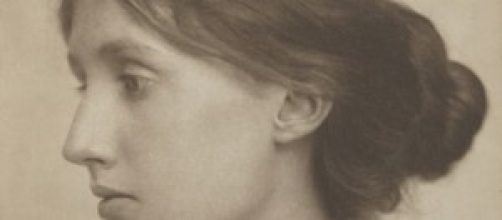The Bloomsbury Group continues to fascinate us today, and centralfigure of this intellectual group was Virginia Woolf. As Sandy Nairne, directorof the National Portrait Gallery, says “Virginia Woolf was one of the Britain’smost important writers and thinkers, who played a pivotal role at the hearth ofmodernism in the early twentieth century”.
Over the past decades, countless of books about VirginiaWoolf and the Bloomsbury group have been published, and her work has beenadapted for both screen and stage. There have also been thousands ofexhibitions and permanent collections in museums, libraries and universities everywherein the world.
Now it is the turn of the National Portrait Gallery. What thegallery does is something unique: for the first time, Woolf’s life and literaryworks, her fascination with London, awareness of modernity, as well as herpolitical views are explored through portraiture.
Interestingly, Woolf herself had a strong interest in bothpainted and photographic portraiture.
“Painting and writing have much to tell each other”, sheobserved in Walter Sickert: A conversation (1934), “and though painting andwriting must part in the end, they have much in common, because the novelistafter all wants to make us see . . . .”
A major theme of the exhibition is Woolf’s problematic andintense relationship with the Bloomsbury Group.
This is perhaps why the show startsnot with Virginia’s birthday but with a photo of the Woolf’s house at52 Tavistock Square after it was devastated by a bomb in October 1940. Not onlydid Virginia and Leonard live there for 15 years but the house was also meetingplace for the writers, painters and intellectuals of the group.
Viewers are then faced with portraits and photographs ofWoolf by her contemporaries, such as Duncan Grant, Roger Fry and Virginia’ssister Vanessa Bell. There are also photographs of Woolf posing for Vogue and forMan Ray that capture the glamorous aspect of her life. Because of her veryfragile beauty, Virginia was incredibly photogenic: yet, she was also a tragic characterwho rarely smiled.
Besides photos and portraits, the show features letters toand from friends and extracts from Woolf’s personal diaries. All thesematerials help visitors follow her mental vulnerability- from the age of 13,Woolf suffered from bouts of mental illness. Most moving are the letters shewrote to her sister Vanessa and her husband Leonard before her suicide in 1941.Both are displayed close to her walking stick that she left on the riverbank bythe river.
"(...) I feel certain that I am going mad again. I feel we can't go through another of those terrible times. (...) So I am doing what seems the best thing to do. You have given me the greatest possible happiness. You have been in every way all that anyone could be.
I don't think two people could have been happier 'till this terrible disease came. I can't fight any longer. (...) I don't think two people could have been happier than we have been. V."
Part of the exhibition focuses on lesser known aspects ofWoolf’s life, such as her political awareness. In her book Three Guineas (1938)Woolf asks “What can we do to prevent war?” and she supported fundraisingevents for those affected by the Spanish Civil War. The exhibition includes oneof Picasso's Weeping Woman drawingswhich he created specifically for a fundraising event at the Royal Albert Hall,at which Virginia and Leonard Woolf sat on the platform.
Guest curated by biographer Frances Spalding, Virginia Woolf: Art, Life and Vision is a moving and unique show that brings to life the writer and the world in which she lived.
It is true that each picture can only capture a single and precise moment - but the show as a whole forms a vivid portrait of one of the most complex, intelligent and fascinating figures of our time.

